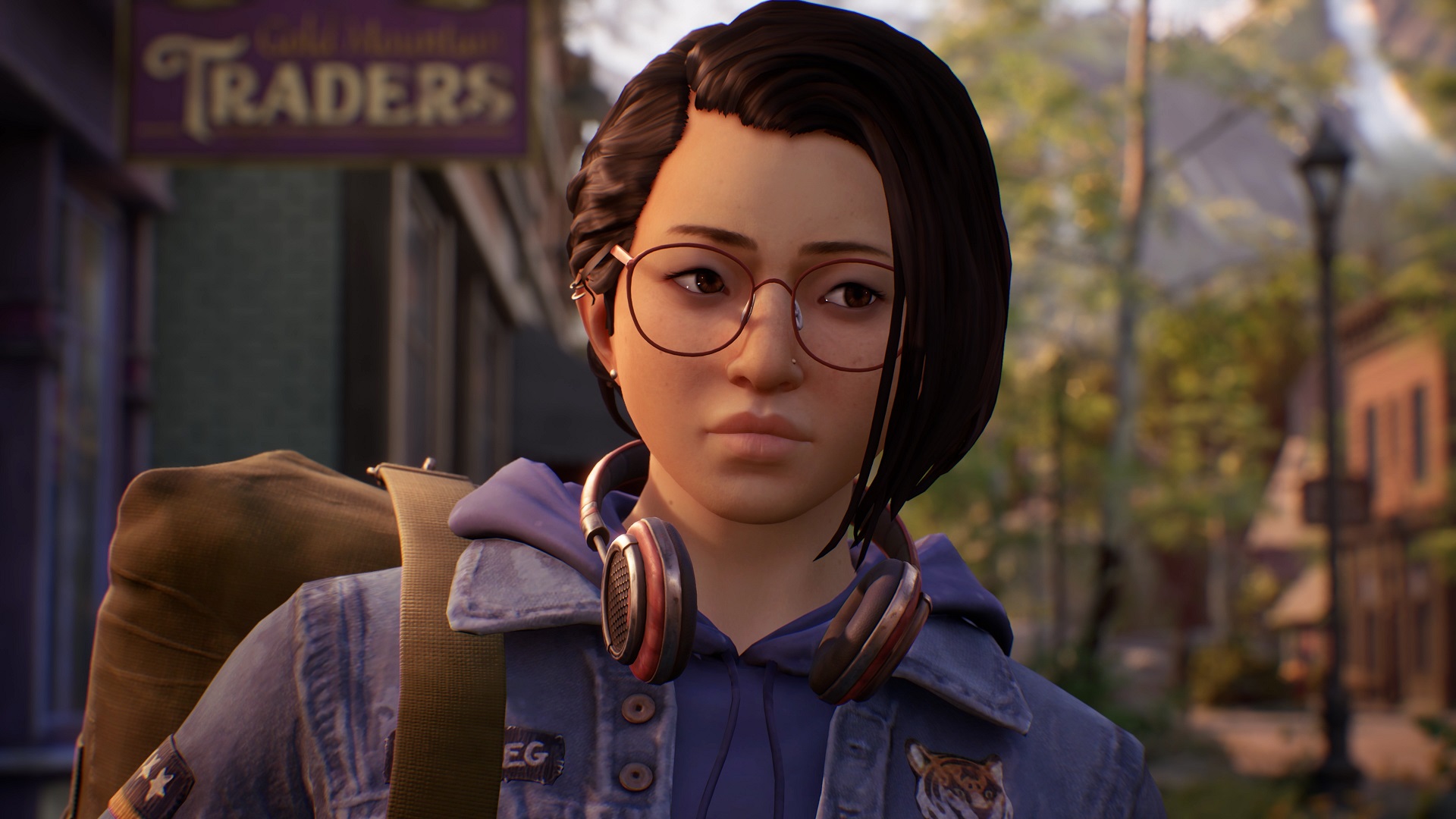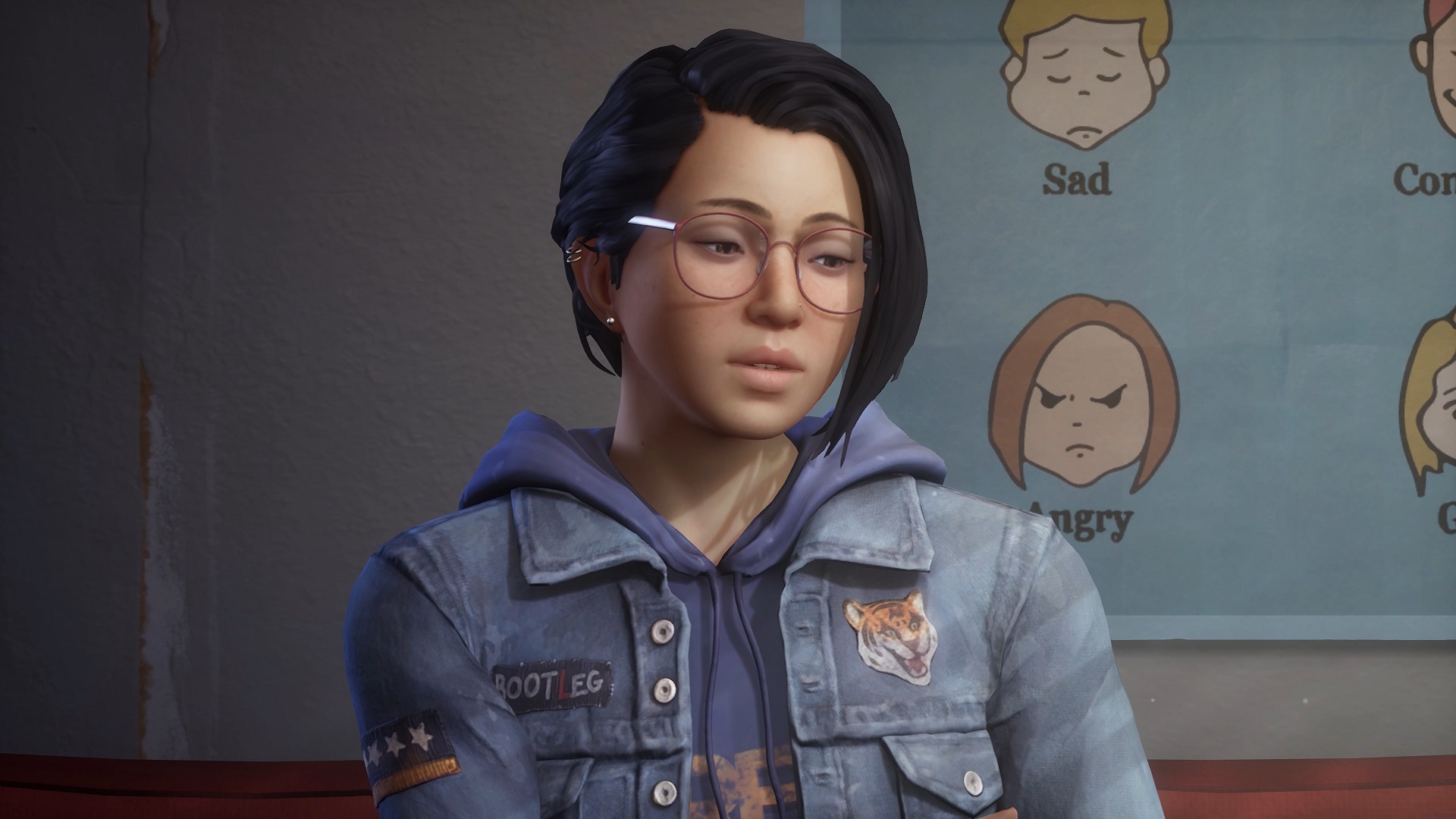Life is Strange: True Colors – How Deck Nine Games hopes to create an authentic and relatable protagonist in Alex Chen
We spoke to actor Erika Mori and Deck Nine Games senior staff writer Felice Kuan about Life is Strange: True Colors' new protagonist Alex Chen

When I first see Alex Chen, the protagonist of Life is Strange: True Colors, she looks visibly uncomfortable. She is shifting in her seat, and her eyes dart around nervously as she is asked a series of questions about her upcoming departure to the small Colorado town of Haven Springs. Alex's responses are often short, but her facial expressions and body language speak volumes, and what's most striking is just how easy it is to sense how she is feeling without the need for her to say very much at all.
The expressive performance of Alex, a young Asian-American woman who has the unique ability to manipulate and absorb the emotions of others, is played by Denver-based actor Erika Mori. Mori tells me that the technology used to capture her full performance – True Colors is the first game in the series to do so – allowed her to provide more nuanced reactions for Alex within the different situations the game is set to put us in. "The ability to have just a single person be the body physicality, face, and voice of the character really allowed an authentic and organic performance," Mori says. "When we were in that mocap room, we didn't have to worry about, like, 'oh, okay, well, we need to make sure that we capture that emotion, or that emotional resonance when we go to VO to make sure that it matches up with what you were doing physically. It was all of a piece, it was all together."
Strong connections
"The interesting part about the power of empathy is that it's not the power of sympathy – it's the power of empathy."
Erika Mori, lead actor
Capturing the performances of the actors in this way also changed how the writers approached scripting the characters. Senior staff writer Felice Kuan explains that the technology, along with Mori's insights and performance, greatly influenced the creation of Alex as Deck Nine was working on the story.
"It was the technology, and it was also having Erika, because Erika was very much a part of creating who Alex is. The way that she spoke, and her insights into the character, also would change what we would do," Kuan explains. "The writers were in the room when we were mo-capping; we definitely found that we could present a situation and, rather than write reactive dialogue, we could just let Erika react and whatever was on her face was often enough to share what she was feeling more than words, perhaps. So we quickly got used to that process of just writing in a more organic way and seeing how much we could bring out of the facial expression to the moments instead of words."
You'll be able to wield a brand new power in Life is Strange: True Colors. Alex has a supernatural empathic ability that lets her absorb and manipulate the emotions of people around her. This means that Alex can better understand others and really see those she encounters, but she's also at risk of letting their emotions overwhelm her own. The volatile nature of the power looks set to present some interesting scenarios as we navigate through the story of True Colors.
"The interesting part about the power of empathy is that it's not the power of sympathy – it's the power of empathy. When Alex is taking on or experiencing the emotions of others, not only is she feeling their contextualized experience, but it's also drawing from her own," says Mori. "It's experiencing rage of somebody else that is pulling on her own rage, pulling it out of her… it's really the strongest connection between people, it forges a bond with whomever she is interacting with and provides a clarity into her ability to see another person, to really see them."
Kuan believes that the empathic power provides a very interesting storytelling tool that has allowed the team to be creative in its approach to exploring emotion and Alex's connection to others. From sometimes "going surrealistic" when "Alex inhabits somebody else's emotions" to using audio and different imagery depending on the moment. It's also a "double-layered" experience the team is trying to convey, since you're experiencing the emotions of others as well as Alex's emotions. "I think it's a very rich experience," Kuan adds. "And I am excited to see what people take away from it."
Weekly digests, tales from the communities you love, and more
Authenticity


The future of Life is Strange: How True Colors is leading the series into the next generation.
The ability to wield empathy may sound like a powerful asset, but Alex views it as a curse – causing her to distance herself from those around her. As she's about to set out to Haven Springs, she hopes to just be a "normal girl, in a normal town." Both her power and her background in foster care have contributed to Alex's feeling of being an outsider, as Mori explains. "[Alex feels like] an outsider in terms of her background, an outsider in terms of her not feeling safe to interact with others in what many would deem a normal way because somebody feels something intense, and it's going to impact her in a way that it might not with her peers. And I think that shunning of the parts of ourselves that we deem as other is very universal. It's very human. And it's also like a part of our maturation process as we move through the world. How do I healthfully access these emotions? She just has it a little rougher than most."
"I think what's really wonderful about Alex, though, is that she does feel like an outsider, she does feel like an other," Mori continues. "But maybe the most compelling part of her for me was this underlying hope. She never stops trying to find community, to find connection – that hope in her, it doesn't die, which is really beautiful. Because given circumstances, I could see – we could all see – where that hope could be stamped out."
Kuan adds that you'll be able to see and learn more about Alex's past experiences in peripheral elements, such as SMS messages after leaving Helping Hands – a foster care home that she resided in for eight years – that "reinforces how much of an outsider she does feel, not just from Haven, but from people in general."
The writing team at Deck Nine spoke to consultants and drew from experiences of those who had been in foster care to inform Alex's time at the Helping Hands group. As Kuan explains, the team took actual details from these consultations and worked those into Alex's background, but they also tried to draw from the attitudes and experiences of Tristan, an individual the team spoke to who had been in the foster care system. "There was a lot of joy, actually, that he brought to his description of his experiences, which we found very compelling," Kuan says. "And we wanted to bring that energy to Alex as well."

Making Alex feel authentic was very important to Deck Nine Games. Since Life is Strange: True Colors was officially revealed, there's already been an outpouring of love for the new protagonist, which reiterated just how meaningful and significant it is to see ourselves reflected in the games we play. When asked about representation and how important it was to be authentic when it came to bringing Alex to life, Kuan spoke about the fan response and explained that the team strived to create a relatable character that will resonate with as many players as possible.
"[Being authentic] was really important to me. I know that for myself and other Asian devs at the studio, because it [making True Colors] was a long process - you know, two and half years - it would come in cycles. Every so often, something in the game would remind me of the magnitude of what was happening, and I would get emotional all over again," Kuan says. "Seeing the fan response was another occasion. It's hard to say what will make a big difference for each individual person when they see some aspect of themselves represented. Sometimes it is seeing your identity in media, sometimes it's seeing something that is parallel to your own experience that can make a huge difference. So for me, I tried anyway, to put as much as I could across many vectors of Alex's life in the hopes that whatever is out there will resonate with people who are Asian, with people who are a lot like Alex, with people who have gone through what she's gone through".
"Diversity goes outside of race or gender. While I am happy that Alex represents a protagonist that isn't as common in games, I also am thrilled that she is more body diverse then a lot of game characters that I have seen," Mori adds. "But to speak to Felice's point about diversity of experience, I think that what makes Alex so compelling and so relatable is that, regardless of whether you look like her or you have a background like her, I think you will find points of commonality and relatability being her and hopefully that helps to sort of bridge the gap of otherness, as well. And so I think Alex represents a whole basket of diversity that seems to be a really important part of the Life is Strange world."
Life is Strange: True Colors is set to release on PS5, PS4, Xbox Series X, Xbox One, and PC on September 10.

I started out writing for the games section of a student-run website as an undergrad, and continued to write about games in my free time during retail and temp jobs for a number of years. Eventually, I earned an MA in magazine journalism at Cardiff University, and soon after got my first official role in the industry as a content editor for Stuff magazine. After writing about all things tech and games-related, I then did a brief stint as a freelancer before I landed my role as a staff writer here at GamesRadar+. Now I get to write features, previews, and reviews, and when I'm not doing that, you can usually find me lost in any one of the Dragon Age or Mass Effect games, tucking into another delightful indie, or drinking far too much tea for my own good.


